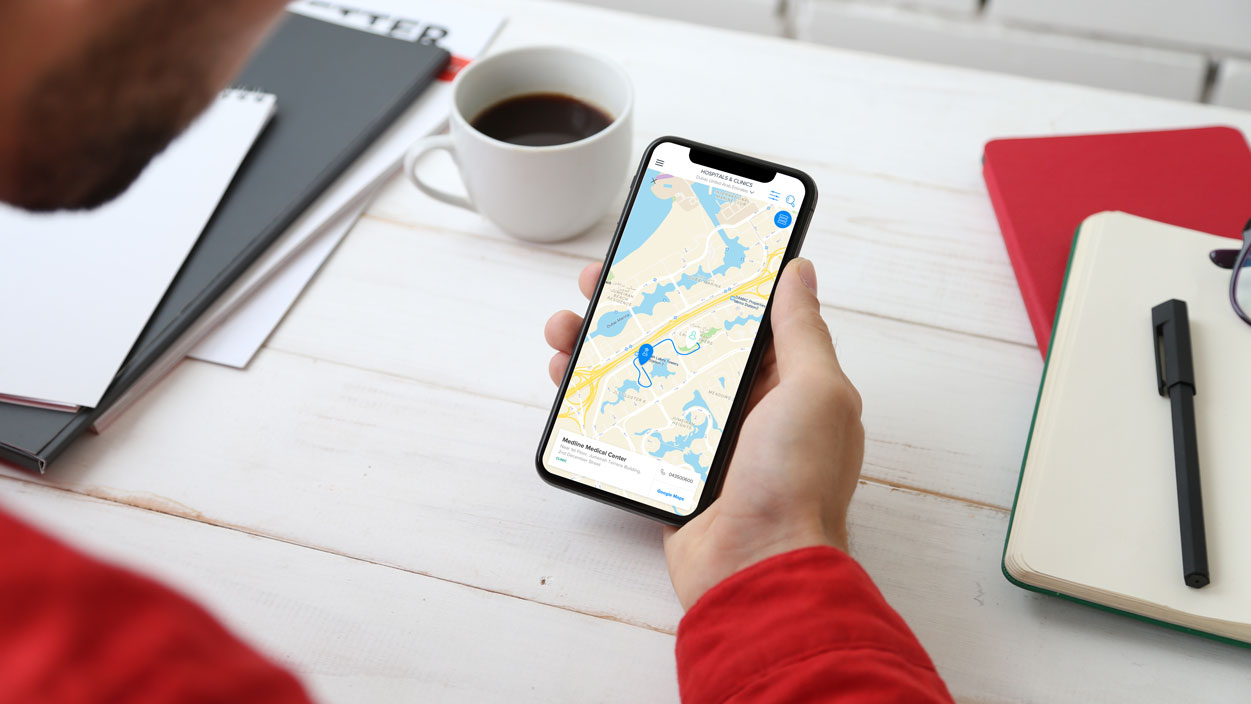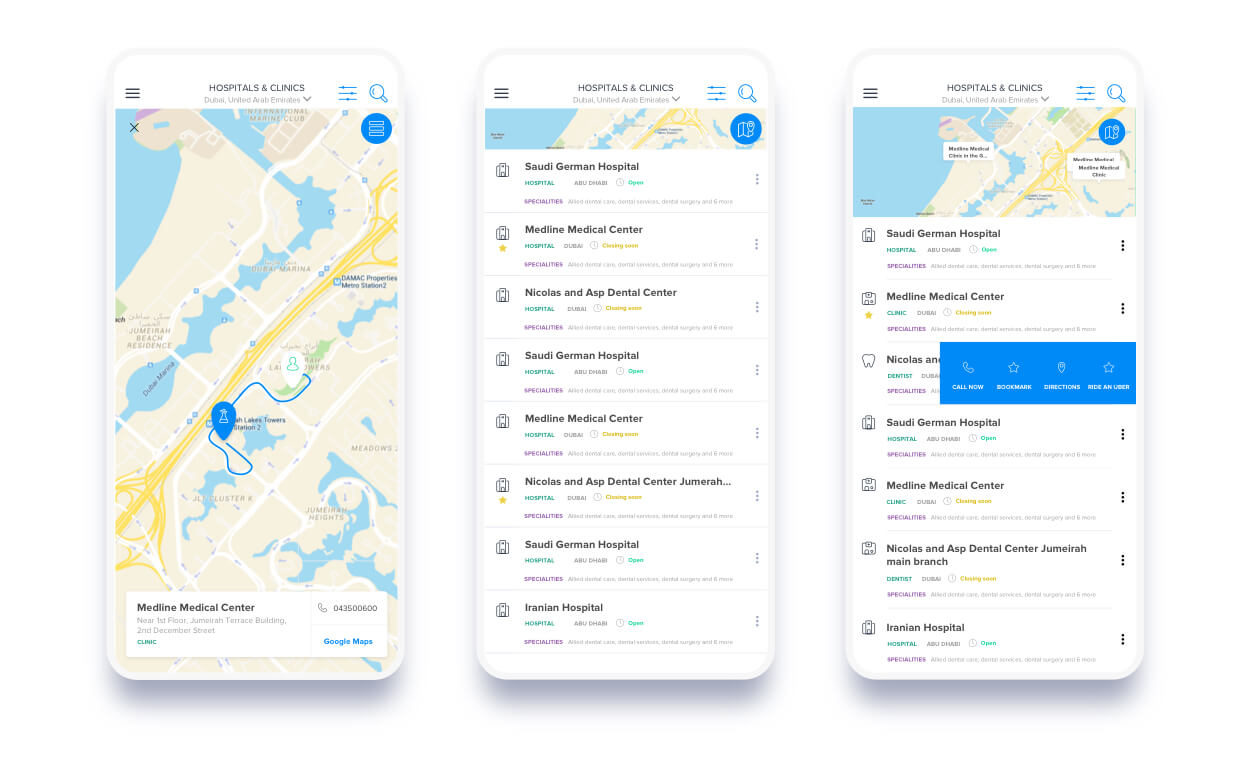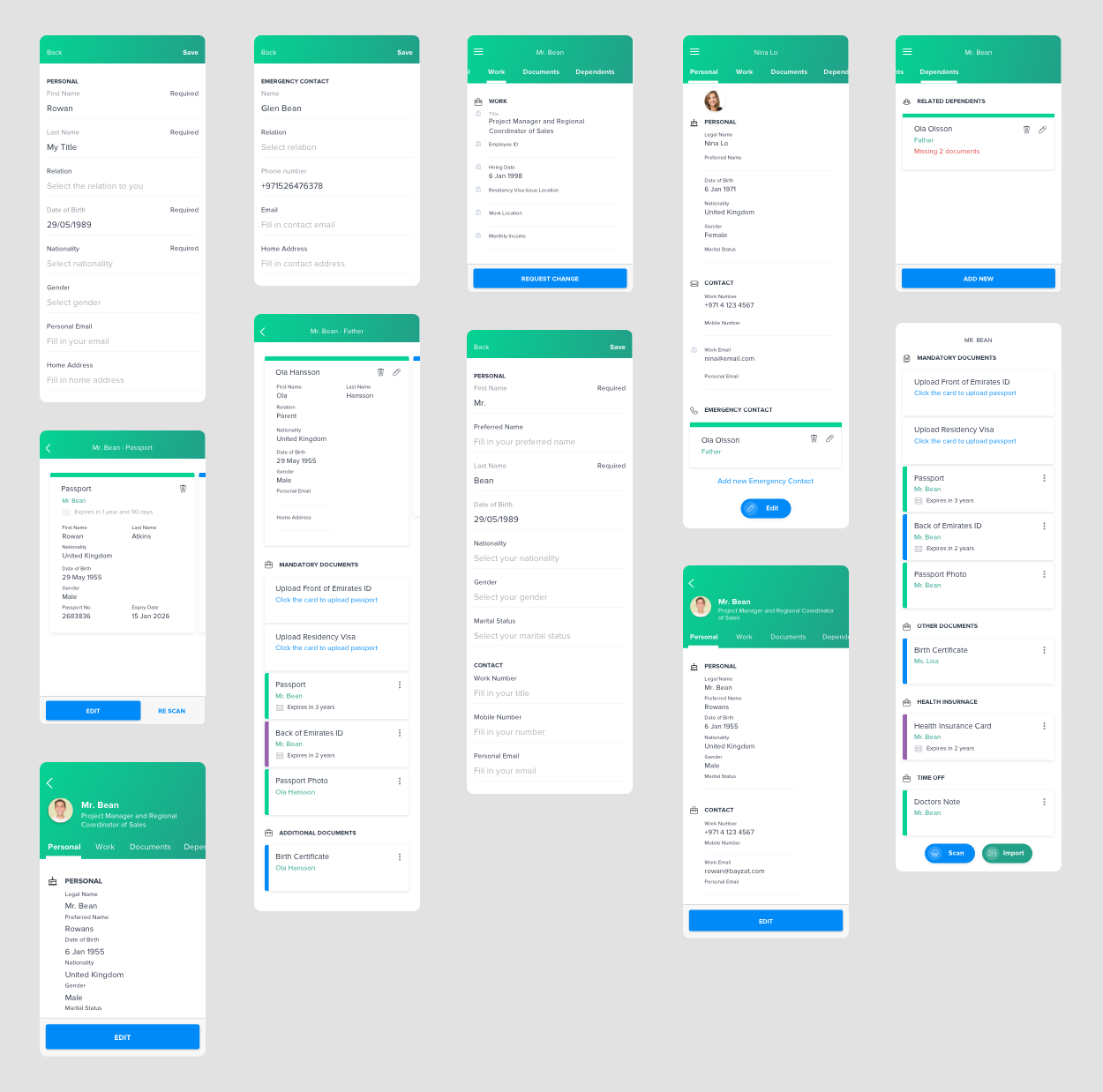


Resolution
Smart phone screens today is getting bigger and better, however, back in 2015 the dimensions of screens were smaller and a considerable portion of people were using very small screens for apps based on today’s standards.


The Bayzat app started of as an extension to its mission to enable people to make the most of their insurance and ultimately evolved into also aiding companies and employees in their HR work.
The Bayzat app started off with one core feature, the health insurance search. This helped insurance holders to use their health insurance in a more productive and efficient way and offloaded responsibilities from HR staff when provided as a company benefit. As the years went by more features of the SaaS platform made its way into the Bayzat app and changes were made constantly. Quick iterations allowed the team to explore new feature additions and implement it into the app.
I worked as the main UI and UX lead for the Bayzat app.
Sketch, InVision

Wireframing and prototyping were done with the help of InVision. Interactive prototypes allowed all stakeholders to give input and be part of the design process. A key collaboration in this process was the input from the sales team as they had the most day to day interaction with users of the app.
With a limited budget for user testing the technique of running small tests more often with about 5 users, rather than running fewer larger tests. This allowed us to test a lot more throughout the process and iterate quickly.
As the SaaS platform grew, so did the app. The initial health insurance search functionality and design targeted towards anyone that are in charge of their own health insurance had to be mixed with functionality and design choices targeted to employees and HR staff to aid in everyday work.
As the only designer on the team I coordinated the production of the app together with the product and programmer team. Documentation ensured understanding of design choices and desired interaction behavior. That was followed up by rigorous testing to make sure nothing got lost in translation between design and programming.



Smart phone screens today is getting bigger and better, however, back in 2015 the dimensions of screens were smaller and a considerable portion of people were using very small screens for apps based on today’s standards.

